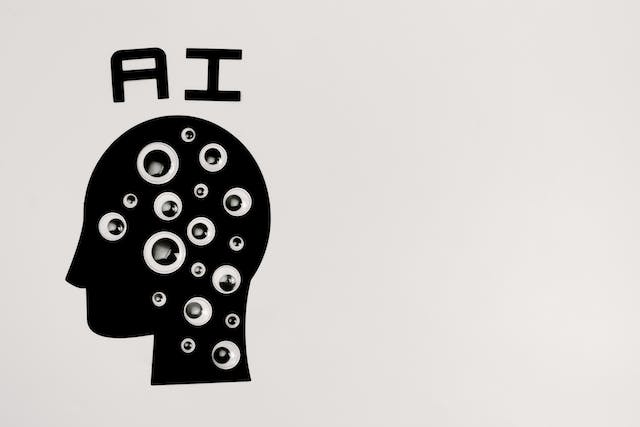Artificial Intelligence (AI) and Machine Learning (ML) have completely changed a number of sectors, but the education sector is one where their revolutionary effects are most apparent. Online education has grown at an unparalleled rate in recent years, and AI and ML technologies have significantly influenced this sector. This article examines the many ways that artificial intelligence (AI) and machine learning (ML) are impacting and improving online education, from intelligent data analytics to tailored learning experiences.

Tailored Education:
Customizing learning experiences to each student’s requirements is one of AI and ML’s most important contributions to online education. The varied learning styles and speeds of pupils are sometimes difficult for traditional education approaches to support. On the other hand, AI systems are able to generate tailored learning routes by analyzing a student’s progress, preferences, and performance. Online systems that use machine learning (ML) may adjust how information is delivered, recommend more resources, and even change the degree of difficulty of exercises to better meet the individual needs of each student. This individualized approach promotes a more effective and interesting learning environment in addition to improving knowledge.
Systems of Adaptive Assessment:
Online education’s assessment procedure is being redefined by AI-driven adaptive assessment systems. These systems track students’ performance data over time to determine their strong and weak points. They create adaptive tests and quizzes based on this data, which are tailored to the individual requirements of every learner. Through the provision of focused feedback and the dynamic modification of question complexity, these systems provide a more precise evaluation of a student’s competencies. This lessens the possibility of rote memory and encourages a more thorough comprehension of the material.
Sensible Tutoring Programs:
Intelligent teaching systems driven by AI have become virtual mentors that provide pupils individualized help and direction. These systems provide real-time feedback and support by using complex algorithms to comprehend each user’s unique learning preferences and styles. These tutors may converse with pupils using Natural Language Processing (NLP), responding to questions, elucidating ideas, and providing further resources. Beyond the limitations of conventional textbooks, this responsive and interactive learning environment promotes a dynamic and cooperative learning environment.
Educational Insights using Data Analytics:
Large volumes of data can be processed fast and reliably by AI and ML systems. This capacity is used in online education to gather and examine data on behavior, performance, and engagement from students. These insights may be used by online learning environments and educational institutions to spot patterns, evaluate the efficacy of their approaches, and improve their course designs. In order to provide timely interventions that enhance students’ learning journeys, predictive analytics can even identify pupils who may be at danger of falling behind. Through the use of data-driven decision-making, educators may enhance the virtual learning environment on an ongoing basis.
Automated Feedback and Grading:
Online education’s evaluation procedure has been made more efficient by AI-powered grading systems. With impressive accuracy, machine learning algorithms can assess tests, quizzes, and assignments, relieving teachers of some of their workload and allowing students to get feedback more quickly. In addition to saving time, automated grading guarantees evaluative uniformity and reduces the possibility of bias. After that, teachers may concentrate on more difficult aspects of instruction, including giving students personalized feedback and attending to their specific learning requirements.
Future Advances in AI and ML for Virtual Learning:
Ongoing advancements in the fields of AI and ML hold promise for further improving online learning. Integrating augmented reality (AR) and virtual reality (VR) technology with AI-driven educational systems is one field of ongoing research. With the help of this combination, students may participate in three-dimensional models, simulations, and virtual worlds during immersive learning sessions. These developments dismantle conventional boundaries by giving students, wherever they may be in the world, access to practical experiences in fields like science, engineering, and medicine.

Additionally, as natural language comprehension skills advance, chatbots and virtual assistants powered by AI in online learning environments become more refined. These virtual assistants may help students immediately by responding to their questions, explaining difficult subjects, and helping them with their assignments. By incorporating sentiment analysis, these systems are able to assess the emotions of their users, which facilitates more responsive and understanding interactions and creates a good atmosphere for online learning.
The Growth of Content Created by AI:
The use of AI to the generation of material for online courses is another significant advance. Large-scale datasets may be analyzed by AI algorithms to find pertinent information, produce interesting multimedia material, and make tests and quizzes. By doing this, the course creation process is sped up and the material is kept up to date and in line with industry trends. AI-generated material may adjust to accommodate a variety of learning methods by combining interactive, visual, and aural components.
Ethical Issues and Difficulties
While there are many advantages to online learning from the integration of AI and ML, there are also obstacles and ethical issues to be addressed. To guarantee a responsible and inclusive learning environment, it is essential to tackle crucial problems such as privacy concerns, data security, and the possibility of algorithmic bias. Working together, educators, legislators, and techies need to create strong frameworks that put justice, openness, and the security of private student information first.
Furthermore, the broad use of AI-driven online education is hampered by the digital divide. Worldwide disparities persist in the availability of dependable internet access, suitable gadgets, and proficiency in digital literacy. Closing this gap will guarantee that students from a range of socioeconomic backgrounds can benefit from AI and ML in the classroom.
Techniques for Professional Development and Integration:
In order to successfully incorporate AI and ML into online learning, educators must take a proactive approach to their professional development. It is recommended that educational institutions and platforms allocate resources towards training programs that enable instructors to successfully use these technologies. AI-generated material, adaptive learning techniques, and data analytics interpretation are just a few of the subjects that may be covered in training modules. Furthermore, in order to keep educators up to date on the newest developments and best practices in the ever-evolving area of educational technology, it is imperative to cultivate a culture of continuous learning.
Cooperation in Transdisciplinary Research:
The development of AI and ML for online learning depends heavily on multidisciplinary cooperation. Experts in data science, computer science, psychology, and education may work together to develop creative solutions for the many problems that confront educators and online learners. To make sure that technical advancements are in line with the fundamentals of efficient teaching and learning, collaborative research projects might investigate the relationship between artificial intelligence (AI) and cognitive science, pedagogy, and human-computer interaction.
International Cooperation for Access for All:
By enabling learners all around the globe to access top-notch educational opportunities, AI and ML have the potential to democratize education. Global cooperation and information sharing initiatives have the potential to facilitate the creation of open-source educational materials and technologies. Fostering collaborations across educational institutions, governmental bodies, and ed-tech enterprises may help close the digital divide and guarantee that students in marginalized areas have equal access to the advantages of AI-enhanced learning.
Feedback Cycles and Ongoing Development:
The development of strong feedback loops that enable ongoing advancements in online learning is made possible by the combination of AI and ML. Teachers may improve and enhance course material, instructional practices, and assessment techniques by using insights from analytics, student performance data, and feedback systems. A dynamic and responsive educational environment that adjusts to the changing requirements of students and the demands of a world that is changing quickly is supported by this iterative process, which is made possible by AI.

Getting Pupils Ready for the Future:
The introduction of AI and ML into online learning has consequences for students in addition to teachers. It is imperative that the curriculum include digital literacy and critical thinking abilities to make sure students are prepared to comprehend AI-driven algorithms, traverse the information environment, and utilize technology appropriately. Furthermore, the focus should be on developing creativity, flexibility, and problem-solving abilities—skills that are still necessary in a world where artificial intelligence supplements human intellect rather than replaces it.
In summary:
The way we approach learning and teaching has fundamentally changed as a result of the incorporation of AI and machine learning into online education. These technologies are changing the face of education, from intelligent tutoring systems to adaptive evaluations and tailored learning pathways. The potential for innovation in online education is enormous as we continue to use the power of AI and ML, pointing to a day when learning will be both accessible and customized to meet the particular requirements of every student. Accepting these developments may result in more efficient, interesting, and inclusive learning opportunities for students everywhere.



